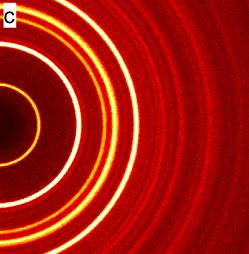Seems possible…
I don’t think go pros are rated for the temperatures reached during takeoff and in space. Also the forces of takeoff and air pressure might cause issues too.
The duct tape will be fine tho.
We duct tape a Stretch Armstrong to the rockets, and once Sr. Armstrong reaches his limit, he’ll snap back and pull the Earth closer to the moon because there is no gravity in space, thus making future launches cheaper and quicker.
That’s science, folks.
Or at least folk-science!
Señor Armstrong? I have no idea why I love that so much. It immediately elevates him somehow in my mind. “Introducing Señor Aureliano (Stretch) Brazo-Fuerte!”
This being from a physics book written by Chuck Norris
Sounds like the recipe to gain a Legend of Zelda: Majora’s Mask moon to me.
They are rated for the temperatures, if you use the right duct tape. We flew one here: https://m.dpreview.com/news/7371388799/nanoavionics-captures-first-4k-resolution-satellite-selfie-in-space-with-customized-gopro
There are less guarantees regarding life time due to radiations, but they are surprisingly good on this and the one in the link still work to this day (525km orbit)
Did you know that every Apollo mission carried multiple rolls of ordinary duct tape with them.
It was used occasionally to fix broken things like the Apollo 17 moonbuggy.
I also wonder what bandwidth you have available to stream the videofeed back to earth.
Afaik The original Apollo 11 used some low res, low fps tv format that had to be converted on earth, because they didn’t have enough bandwidth to stream full tv resolution at the time.
Oh I know this one, the Apollo 11 cameras were 320 scan lines at 10fps with an optional high res setting of like 1280 scan lines at 0.625 fps. Not sure on the second setting but the first one I’m positive about.
Electronics have to be designed for use in outer space. That includes hardening from radiation. Adding redundancy because there will be glitches and failures due to bit flips. Using components that can operate in a vacuum. There’s thermal considerations, both extreme heat and cold. You also need filters in the optics to protect the image sensor.
You can totally put a GoPro in space. It’s just not going to last very long before it fails.
Bit flips are a fun thing to learn about. I encourage anyone that doesn’t know what it is to just look it up on you tube or whatever.
And after that I encourage those same people to look up the history of Mario 64 speed running.
That’s good to learn to. All you gotta do is half press A.
Edit. I actually forgot about bit flips in mario64. Good call.
Bit flips occur when a posse of electrons loses an intimidation check to the sun.
I find this hilarious.
Is that the same as skin cancer?
Skin cancer is when the sun convinces a cell to go with their totallynotapyramidscheme MLM; the cell, in turn, convinces other cells to join their pyram- I mean MLM.
Regression is when the MLM slips up and the cell police finally have enough evidence to take it down for the pyramid scheme that it is.
Pretty much.
deleted by creator
thermal considerations, both extreme heat and cold.
Can electronics dissipate a significant amount of heat in a vacuum? Obviously they will lose a small amount of heat to radiation, but here on Earth, our electronics dissipate the majority of the heat by making contact with air. This is by either using a fan to force air through the metal fins of a heat sink, or by passively letting the air touching the device carry heat away.
So how do electronics in space dissipate heat? A heat sink can only hold so much heat before it too is too hot for the electronic device to continue to function.
Transferring heat to a part outside the system that is optimised to emit thermal radiation
Oh, nice. I guess I need to read up on that part.
But emit it to what? Vacuum cannot absorb heat.
There are 3 kinds of thermal transfer- conduction, convection, and radiation.
Conduction and convection are largely useless in space, all the heat basically stays in the same system, at most you can move it around do different parts of the same satellite/spacecraft, whatever, but you can’t really get rid of it.
Which leaves you with radiation, which is not a particularly efficient way of getting rid of heat but you gotta work with what you got.
I cant give too detailed of an explanation because frankly it’s a bit over my head, but this is where the stuff about infrared light being heat comes in. That’s not technically true, after all, heat is basically vibrating atoms, and infrared light is photons, same as visible light just at a different frequency. Basically that vibration heat energy gets turned into photons and then just shoots off into space, essentially making all matter glow a bit in the infrared spectrum, and hotter things glow more.
And if/when those photons hit something else, it gets turned back into heat vibrations. Space is vast and mostly empty of course, so those photons could just keep flying through the void for eternity (I’m sure physicists could chime in and say no they don’t and they actually lose energy and become some other kind of particle or something else crazy that’s way above my head, but don’t worry about that unless you’re trying to be a physicist with a few years of college under your belt)
Lights work in space, so thermal radiation works in space. This is also the same way heat from the sun reaches us here on earth, there’s obviously not a whole lot of matter between us and the sun for conduction or convection to carry the heat to us, it’s just glowing and a bunch of those photons eventually hit us and make our atoms get all wiggly.
If you look at pictures of the ISS, in addition to solar panels, they also have big panels that serve as radiators to get rid of excess heat. They have coolant pumping through them to move heat from the rest of the station to the panels, but from the panel they’re getting rid of it by just radiating it out into space. They’re basically just sitting there glowing out all of the extra heat.
It a good thing there is no atmosphere between us and the sun. Apparently the noise would be deafening.
They have radiators to dissipate heat. And all the required systems to make that work like coolant pumps, as well as heat sinks (or the coolant fluid is the heat sink).
But they also have heaters, to make sure that (especially the batteries) don’t freeze. Satellites hang in a delicate balance between freezing and overheating.
Also the CPU wouldn’t work reliably in those conditions. The kinds of CPUs we do send to space have been tested rigorously and they are also many generations behind the ones we use here on earth. If you made a space worthy GoPro, it might not be very small, light or cheap. Also, 1080p at 60 fps might be a bit too much for that grandpa chip.
Space is super hard for humans, but we’re not alone in that, because it’s also surprisingly hard for electrics to survive up there.
Did… Did you think the moon lander doesn’t already have cameras?
Those cameras are too good. I wanna see the moon as if it was filmed by a tiktok user using their phone.
With filters please… Shrek dancing or some weird shit…
This space launch sponsored by… GoPro and Redbull
NASA does this. Looking at the metadata from last year’s moon orbiter photos (like this one), it was shot on a GoPro HERO4 Black. Here NASA scientists talk about the cameras on that mission.
they aren’t built for space. There’s zero pressure so the battery might burst. Also electronics need radiation shielding since there’s no atmosphere to protect them.
deleted by creator
Not sure about India, but NASA has used GoPros on Moon-related stuff. Artemis I had 4 GoPros on the ends of its solar panels when it orbited the Moon last year.
- heavily modified GoPros, for them to pass the space rating.
Why would they use GoPro to begin? Certainly using off the shelf items makes sense but doesn’t a go pro require you to retrieve the camera to view the video? How do you turn it on or off and wouldn’t the battery just run out?
Edit. Found the source. Rather interesting. https://m.dpreview.com/news/7371388799/nanoavionics-captures-first-4k-resolution-satellite-selfie-in-space-with-customized-gopro
I am also stumped, I think the main reason must be PR, because NASA engineers wrote the book about how to get CCD’s to work in space.
My guess is that they said “Hey lets get some PR by making GoPro space rated” while the “real” engineers build the proper spacecraft, and that’s why the cameras are placed on the solar panels as far away from the crew as possible.
Because NASAs shit will work on the moon and look okay while doing it?
This is a great question, with great answers. Who needs AskScience?!
Removed by mod

















